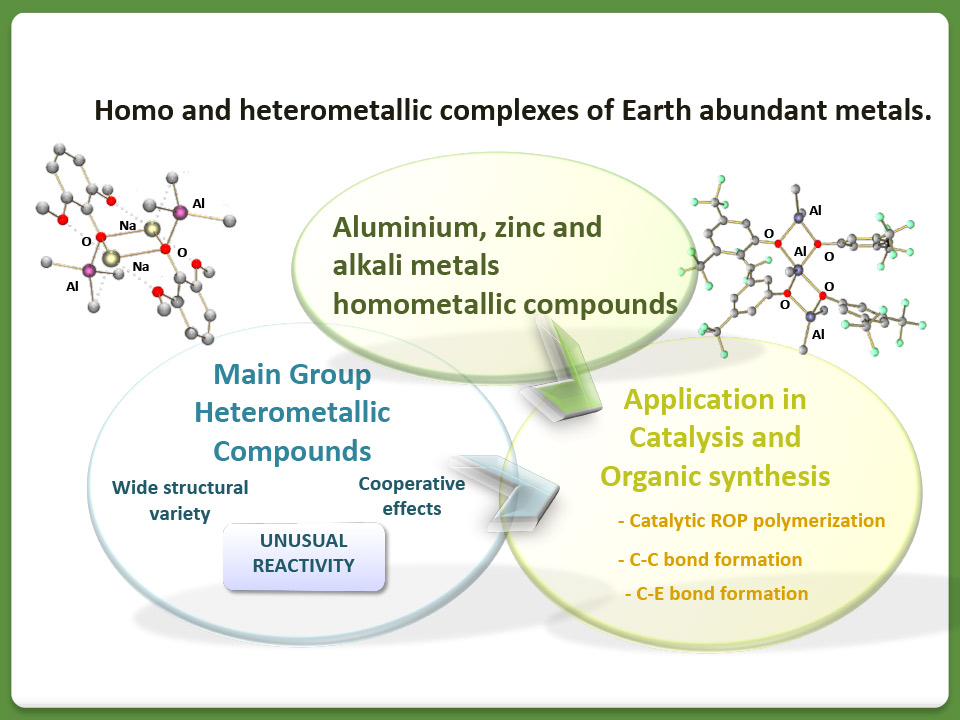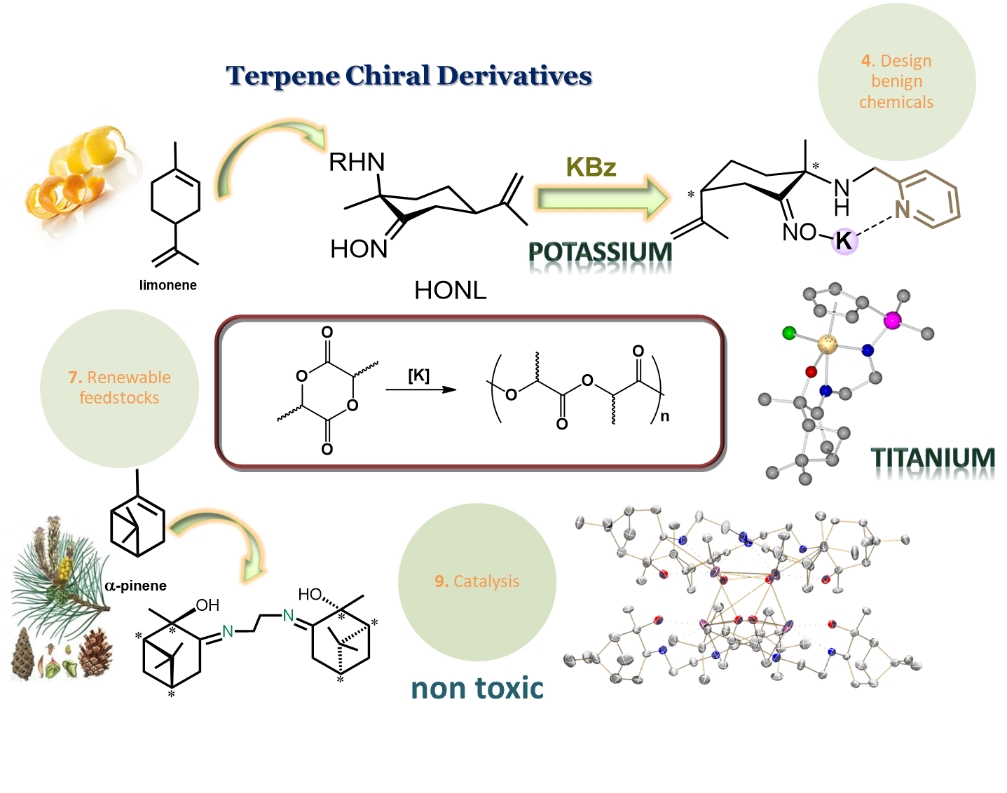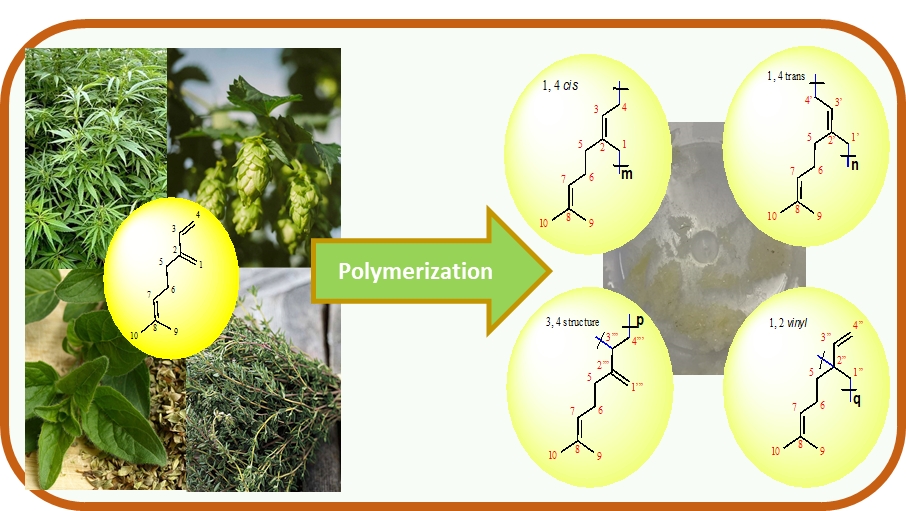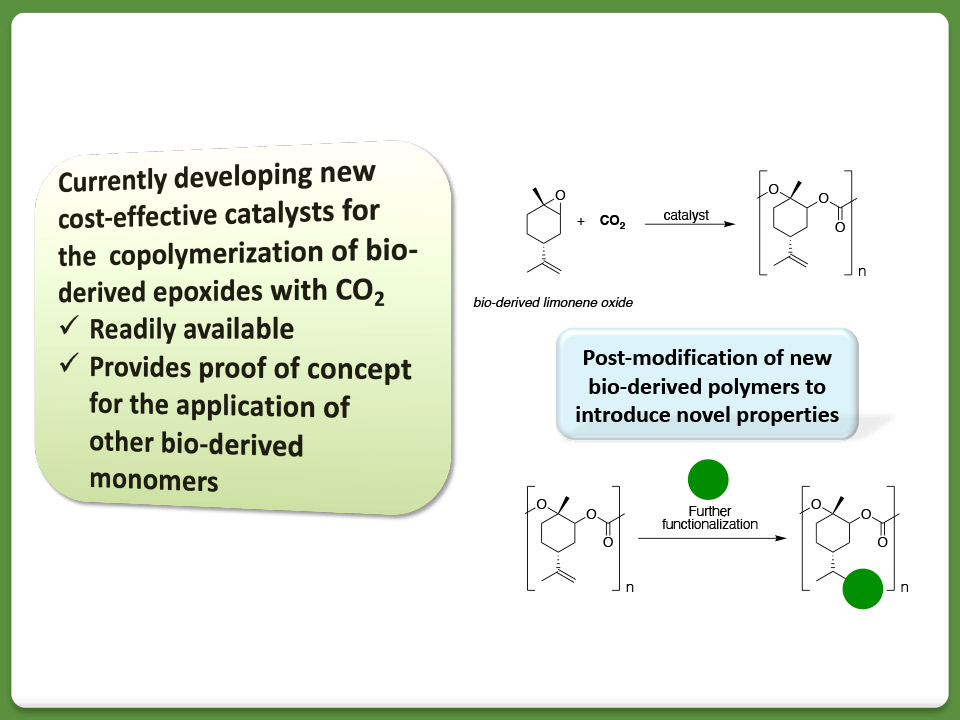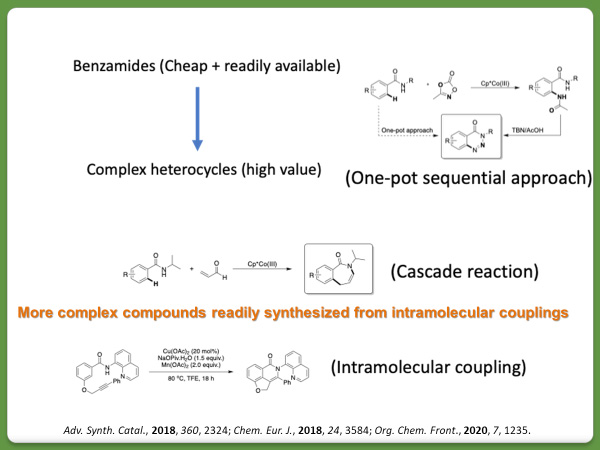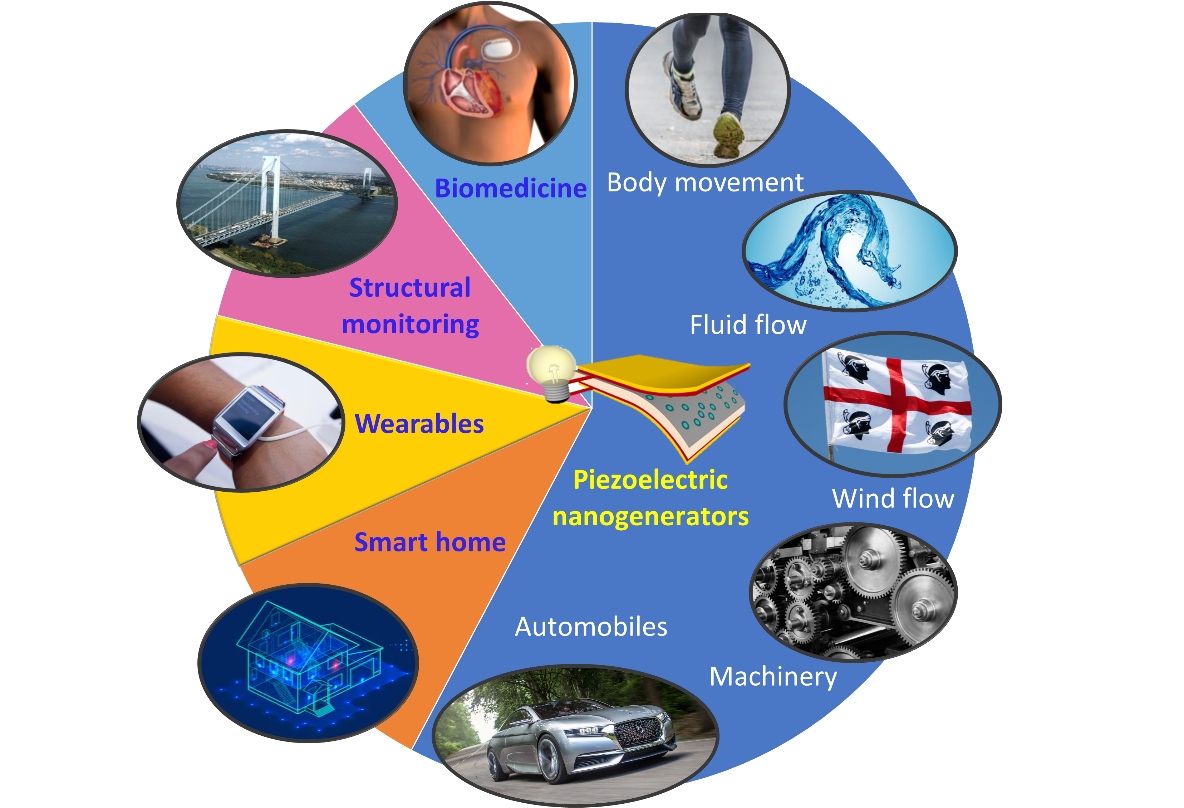Research Lines / Líneas de Investigación
Homo and heterometallic complexes containing Earth abundant metals.
This line of research focuses on the design and synthesis of new mono and polymetallic species based on Earth abundant elements such as Al, Zn, Ti, Fe and alkali metals which are inexpensive and mainly non-toxic and in the study of their activity in catalytic processes, such as polymerization, oxidation, amongst others. In addition we are also focusing on developing catalysts using bio-based ligands such as terpene derivatives.
Polymerization of renewable and multifunctional monomers.
Our research targets the study of the activity of our Earth abundant metal compounds in catalytic processes for the polymerization of functionalized monomers and also co-polymerization with CO2 . A special emphasis is directed towards the design catalysts able to provide a good control of stereoregularity and molecular weights for the resulting polymers. Zinc and group 13 derivatives are well known metals with Lewis acid properties providing catalytic activity in many controlled polymerization processes, and our research aims to exploit these properties, whilst we have also identified that potassium derivatives are non-toxic very active alternative catalysts. As well, we are studying cyclopentadienyl-silsesquioxane titanium complexes that act as highly efficient catalysts, in the presence of MAO as cocatalyst, for the polymerization of diverse renewable and multifunctional monomers, under mild conditions. Another research line in progress is focused on the study of the influence of non-covalent interactions, such as halogen bonding, in polymerization reactions and organic transformations.
In recent years, we have extended our interest to the generation of bioplastics using agricultural waste as feedstock. From biomass a particular suitable and high-percentage candidate to be used as monomers are terpenes. Terpenes are highly abundant compounds of natural origin and even though they can be obtained from inexpensive renewable sources, such as residues coming from wood processing, they are still under-exploited as precursors for polymeric materials. The obtained polymers often lack good mechanical properties, so another challenge targeted by our research is to develop catalytic systems able to provide terpene-based (co)polymers with high performance properties. We are aiming to develop terpene-based (co)polymers for the next generation of renewable polymers for high-performance applications.
CO2 and small molecules activation.
Our research focuses on the development of new catalytic systems for the synthesis of both cyclic and polycarbonates. The utilization of readily synthesized aminotrisphenolate as ligand is of particular focus given the historical precedents of the complexes based on this ligand.
C-H and C-X bond activations, and C-C bond formation promoted by transition or p-block metals.
Investigations are also targeting the design of homo and heterometallic main group compounds able to promote the formation of new C-C and C-E bonds. As well, we are exploring the use of titanium complexes in low oxidation states and other transition metals such as cobalt.
Synthesis and characterization of nanocatalysts via the anchoring of titanium complexes to silica nanoparticles.
Within our research group we are preparing a new kind of nanocatalyst through the anchoring of titanium complexes, bearing choro-silyl groups on the Cp ligand, to silica nanoparticles through the reaction with the surface silanol groups.
Synthesis and characterization of homogenous catalysts for oxidation processes using green oxidants.
Our research is aiming to develop greener oxidation catalytic processes which is a very attractive goal within sustainable chemistry. We have prepared a new type of titanium(IV) complexes, bearing a chiral polydentate ligand based on α-pinene, that displays a high efficiency for the chemoselective oxidation of a wide variety substrates, olefins and thioethers, using environmentally friendly oxidants, such as aqueous hydrogen peroxide.
Design of polymers with advanced properties such as piezo electricity or antimicrobial activity.
The design of polymers with new functionalities is also a key aim within our group. Recently we have developed polymeric nanostructured macromolecules assemblies that can act as nanocarriers of antimicrobial agents. As well we are interested developing bioplastics with advanced properties such as piezoelectricity.

